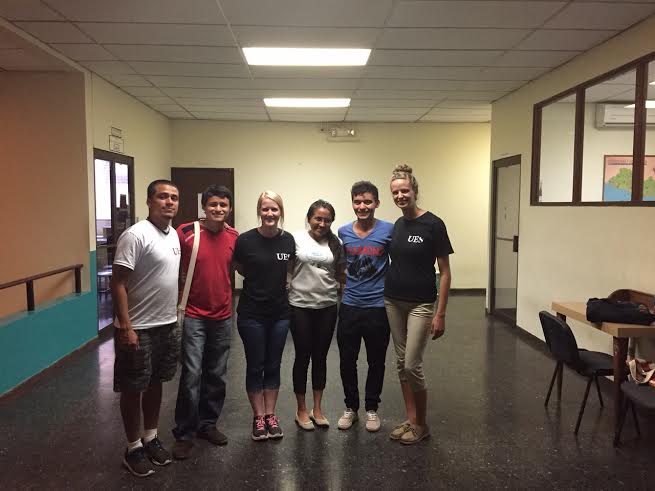
We spent the majority of our time in El Salvador visiting social service agencies and learning about the differences between the United States’ programs and El Salvador’s. To learn through real experiences, students in our group were either sent to a senior center for homeless elders, a home for victims of sex trafficking, the University of El Salvador (UES), or a hunger relief and food sovereignty program.
Two classmates and I were placed at the University of El Salvador. During my trip, I noticed many differences and similarities between Ferris and the UES.
Like Ferris, the University of El Salvador is a public university. However, UES is the only public university in the country, where Ferris is one of 15 public universities just in Michigan. And UES has an enrollment of 54,000, whereas Ferris’ enrollment is about 14,000.
The social life of UES students is similar to that of Ferris students. While visiting a home of one of the students, we got into a conversation about the social aspect of universities in the U.S. and universities in El Salvador. We discovered that, for the most part, they are extremely similar. We were able to have conversations about parties, friends, extracurricular activities, and schoolwork.
The tuition rates are extremely different at the UES. According to the students we met, if you graduated high school in El Salvador it costs about five dollars a month to attend. That is only about $45 for the year. In contrast, Ferris’ tuition is almost $11,000 per year, which doesn’t include room and board costs.
The students asked about the price of university and the cost of rent in the U.S. They were disappointed when they heard how much more expensive U.S. college is, as many of them have dreams of attending school in the U.S. someday for the American school experience. However, many of the students we spoke with were not interested in being employed in the States but wanted to return to El Salvador after they got their graduate degree.
The cost of housing and the living situations at the UES are completely different than Ferris’ housing. We visited a home where 17 students lived. The house had three bedrooms: one for males, two for the females, and two bathrooms. All of the students were from the same village, Santa Marta. These students did not have to pay rent because they do community service in their hometown every weekend.
It was unreal to see how little they paid for school and housing. On the other hand, there is no such thing as a two-bedroom apartment that only two people live in, like where I live in Big Rapids.
When we first arrived on the campus we met with two students who spoke English. Then we went to a class with the students on economics. The class was all in Spanish, but they played a video that was in English with Spanish subtitles. Another interesting part about the UES is that students talked throughout the class, interrupting the teacher. The teacher just continued talking and no one seemed to be annoyed by the interrupting students, other than the students from Ferris.
An intermediate (or level two) foreign language class at the UES was different than what a level two foreign language class would be like at Ferris, which I learned from participating in an intermediate English class at the UES. A student told us beforehand that these students would not speak English very well, as it was only their second year taking English. We were amazed to find out that these students spoke English extremely well, almost fluently. They spoke slowly and with heavy accents, but it was easily understandable.
The professor had the three of us speak with groups of students and help work on their English pronunciation. Basically, they just asked us questions that we answered. I was extremely impressed to be able to have complete conversations with students in a second-year English class. After the class ended, we learned that all of the students were studying English as their major.
My time with the students from the University of El Salvador opened my eyes to how a university in another country can be so similar yet so different than Ferris. If you are interested in learning more about El Salvador and human and environmental rights, our partner, Sister Cities, will be presenting on Wednesday, Oct. 7th from 6 to 8 p.m., location TBA.
Devin Hodgson
Senior studying social work
